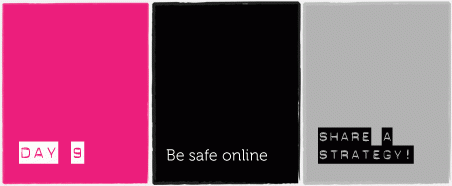
There are increasing reports of women and girls who are subjected to harassment and cyberstalking through the use of technology. Harassment and cyberstalking can take many forms. For example, receiving repeated harassing and threatening messages online and through SMS. Or the harasser pretending to be the victim, and posting sexualised messages on websites, forums or to her contact list. Sometimes this is accompanied by her real name, phone number and sometimes even home address, moving the harassment from online to the material world.
Cyberstalkers usually aims to gather as much information about a person as possible, to track and monitor her movements and activity and to instil fear in her or to cause her harm. Like many forms of violence against women, the harasser or abuser is often someone that is known to the survivor. The UN estimates that 95% of aggressive behaviour, harassment, abusive language and denigrating images in online spaces are aimed at women, and come from partners or former partners.
This is probably because a partner or former partner are the people who may know most about the survivor. They can easily access email accounts and other online spaces by guessing passwords or by having the opportunity to install spyware and other kinds of tracking software on her computer or mobile phone. In unequal relationships, one partner can aim to exert control over the other by controlling her communication channels - who she speaks to, when, about what etc. Even when harassers are not people who are close to us, we sometimes unwittingly post a lot of personal information about ourselves online and don't pay enough attention to how we can better protect our privacy.
How can we make our online experience a safer one? What are some good communication and online practices that we can undertake to make our digital and communication spaces more secure? Share what you know!
1. What's your strategy?
- Share or think of 10, 5, 3 or 1 thing that we can do to be safer online and in our use of communication tools. They can be simple actions, concrete tips or suggestions of tools and applications.
- Think of strategies that can be applied generally, or to specific communication channels and tools, such as mobile phones, social networking spaces, emails etc.
- Here are 10 tips to start with:
- Choose good passwords. Don't use birthdays or names of pets and family members.
- Get to know the privacy options on social networking sites and photo-sharing applications.
- Never post your personal phone number or home address online
- Switch off your bluetooth unless you're actively using it
- Regularly download and delete private photos on your mobile phone
- If you're harassed, keep everything! Don't delete messages, chat logs etc.
- When you breakup, make your last act together deleting private videos and photos.
- Do a search on yourself and your home address and number.
- Log-out from applications when you leave your desk or computer.
- If you're harassed, talk to a trusted friend.
2. Share it & grow the list!
- Share your strategy with the people you have contact with today.
- Post a strategy every hour. Post it as your status message on social networking sites like Facebook, or on your instant messenger like Yahoo! or Skype. Or if you're on Twitter, tweet or retweet a strategy every hour, with the hashtag #takebackthetech. Start a conversation!
- At the end of the day, copy and paste your list and add them as a comment to this page, and share your action with other campaigners and readers of this site.
- Or start a chain-mail and grow the list! Copy and paste this daily action and send it to 10 friends as an email. Add your own strategy to the 10 above, and ask them to do the same. Copy your email to ideas@takebackthetech.net and we'll post your list on this page.
Take back the tech! Protect our right to communicate freely and safely, without violence or harassment. Share a strategy!
- Log in to post comments
